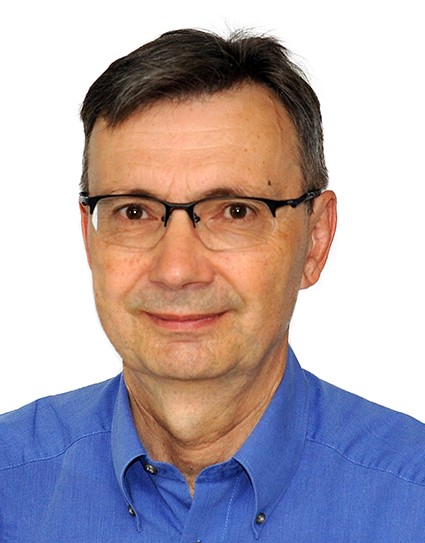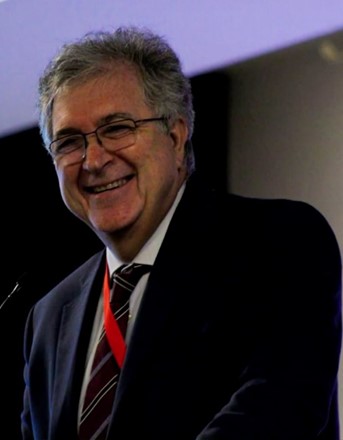DIGITISATION OF DIAGNOSTICS FOR CRITICAL PARTS OF THE TRACK SUPERSTRUCTUREby Assoc. Prof. Otto Plášek, PhD |
|
|
Head of the Institute of Railway Structures and Constructions, University of Brno Otto Plášek has more than three decades of experience in the field of railway infrastructure and specializes in the structural behavior, diagnosis and innovation of railway superstructures and components. After obtaining his M.Sc. in Structures and Transport Structures (1986) from Brno University of Technology, he began his professional career as a railway engineer at Czechoslovak Railways (1986–1991), where he worked on construction projects, station design and track assessment. In 1991, he joined Brno University of Technology, where he received his PhD in Theory of Structures (1999), and he is currently an associate professor. |
Dr Plášek has led and contributed to numerous national and international research and development projects, including EU-funded initiatives such as S-CODE - Switch and Crossing Optimal Design and Evaluation (Shift2Rail Horizon 2020) as well as projects of the Technology Agency of the Czech Republic on smart diagnostics (e.g. Turnout 4.0, Advanced Diagnostics of Railway Turnout Movable Parts), railway bridges and innovations in sleeper pads. His applied research has resulted in patents, utility models, industrial designs, and certified methodologies that have been implemented in railway practice. He has published widely on switch and crossing design, diagnostics, AI-based monitoring techniques, smart autonomous diagnostics and train type identification. Since 1994, he has collaborated with industry partners on more than 130 projects, helping to shape innovations in rail safety, performance and sustainability. At the international level, he is a member of technical committees such as CEN TC 256/SC1 (Bridge Track Interaction) and the National Technology Platform for Railway Infrastructure, where he holds leadership roles.
|
NEW PERSPECTIVES FOR IMPROVING THE ACCURACY OF URBAN NOISE DYNAMIC MAPSby Prof. Gaetano Licitra, PhD |
|
|
Director of the Pisa Department of Environmental Protection Agency of Tuscany Region Department of Physics "E.Fermi", University of Pisa Prof. Gaetano Licitra, BSc and MSc in Physics, Spec. Diploma in Health Physics, is currently Director of the Pisa Department of Environmental Protection Agency of Tuscany Region. Habilitated as Associate Professor (2014) and Full Professor (2020) in Applied Physics, he has been teaching Acoustics at the University of Pisa since 1997 in Physics Department and then at the Environmental Sciences Department and from 2024 at University of Malta. He is member of IIAV and member of the board of the Italian Acoustical Association. |
He has chaired international and national conferences. He is editor of Noise Mapping Journal and Environments. He is listed among the 2% top scientists by Elsevier and University of Stanford for Acoustics since 2020 and since 2024 also for his career. Professor Licitra's focus is on environmental noise, developing models and measurement techniques to assess noise pollution in urban areas in line with Directive 49/2002/EC. He also explores innovative solutions to mitigate noise exposure. Professor Licitra's scientific contributions have been widely published in international journals (Scopus H=37, 193 papers indexed and more than 3250 citations). He has played a major role in the development of guidelines, including the WHO Night Noise Guidelines, the EEA Quiet Zone Guidelines, and IEC and ISO standards. These achievements are the result of extensive international collaboration in EU projects such as the V, VI and VII Framework Programmes, Life and Life Plus, Interreg, as well as active participation in working groups such as WHO, EEA, DG Environment, ISO, IEC and concerted actions (ENNAH). |


Print ISSN: 1848-9842
Electronic ISSN: 1848-9850
User Information
Important Files |
Template for presentations |
Template for posters |
Accommodation form |
Important Deadlines |
Registration and payment: Authors* All participants that are presenting a paper.- 15 April 2012 Participants* Participants without a paper.- 27 April 2012 |
Early registration and payment: Closed |
Acceptance of papers: Closed |
Full paper submission: Closed |
Abstract acceptance: Closed |
Abstract submission: Closed |
Organizer
University of Zagreb
Faculty of Civil Engineering
Department for Transportation
Important Deadlines |
Abstract submission: 10 December 2013 |
Abstract acceptance 15 December 2013 |
Full paper submission: 28 February 2014 |
Acceptance of papers: 15 March 2014 |
Registration and payment: 20 April 2014 |
PPT Presentation submission: 24 April 2014 |
Important Files |
Template for presentations |
Template for papers |
Organizer
University of Zagreb
Faculty of Civil Engineering
Department for Transportation
Important Files |
Template for presentations |
Template for papers |
Conference programme (Final) |
Important Deadlines |
Abstract submission: 15 February 2016 |
Abstract acceptance 29 February 2016 |
Full paper submission: 20 April 2016 |
Acceptance of papers: 30 April 2016 |
Registration and payment: 10 May 2016 |
PPT Presentation submission: 20 May 2016 |
Organizer
University of Zagreb
Faculty of Civil Engineering
Department for Transportation
Important Files |
Call for papers |
Poziv na sudjelovanje |
Template for papers |
Template for presentations |
Template for posters |
FINAL CONFERENCE PROGRAMME |
Important Deadlines |
Abstract submission: 10 January 2018 |
Abstract acceptance 1 February 2018 |
Acceptance of papers: 15 April 2018 |
Registration and payment: 10 May 2018 |
PPT Presentation submission: 14 May 2018 |
Organizer
University of Zagreb
Faculty of Civil Engineering
Department for Transportation
Supporting organizations
FEHRL – the Forum of European National Highway Research Laboratories
Important Files |
Template for papers |
Template for presentations |
Conference programme |
Important Deadlines |
Abstract submission: 20 November 2020 |
Abstract acceptance 20 December 2020 |
Full paper submission: 10 March 2021 |
Acceptance of papers: 20 March 2021 |
Registration and payment: 20 May 2021 |
Pre-recorded Presentation submission: 14 May 2021 |
Organizer
University of Zagreb
Faculty of Civil Engineering
Department for Transportation
Supporting organizations
FEHRL – the Forum of European National Highway Research Laboratories
Important Files |
Second Announcement |
Template for papers |
Template for presentations |
Final conference programme |
Letak - Stručno usavršavanje |
Important Deadlines |
Abstract submission: 10 January 2022 |
Abstract acceptance 20 January 2022 |
Full paper submission: 15 March 2022 |
Acceptance of papers: 10 April 2022 |
Presentation submission: 30 April 2022 |
Organizer
University of Zagreb
Faculty of Civil Engineering
Department for Transportation
Supporting organizations
FEHRL – the Forum of European National Highway Research Laboratories
Important Files |
Second Announcement |
Template for papers |
Template for presentations |
FINAL PROGRAMME |
Important Deadlines |
Abstract submission: Regular sessions: 21 January Special sessions: 31 January |
Abstract acceptance 31 January 2024 |
Full paper submission: 1 March 2024 |
Acceptance of papers: 10 April 2024 |
Registration and payment: 5 May 2024 |
Organizer
University of Zagreb
Faculty of Civil Engineering
Department for Transportation
Supporting organizations
FEHRL – the Forum of European National Highway Research Laboratories
Important Files |
First Announcement |
Important Deadlines |
Abstract submission: 15 December 2025 |
Abstract acceptance 10 January 2026 |
Full paper submission: 1 February 2026 |
Acceptance of papers: 10 April 2026 |
Organizer
University of Zagreb
Faculty of Civil Engineering
Department for Transportation
Supporting organizations
FEHRL – the Forum of European National Highway Research Laboratories



































